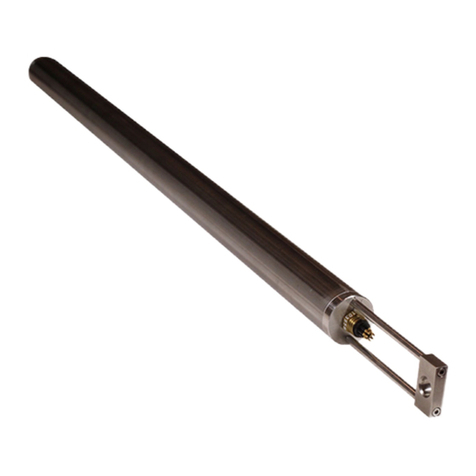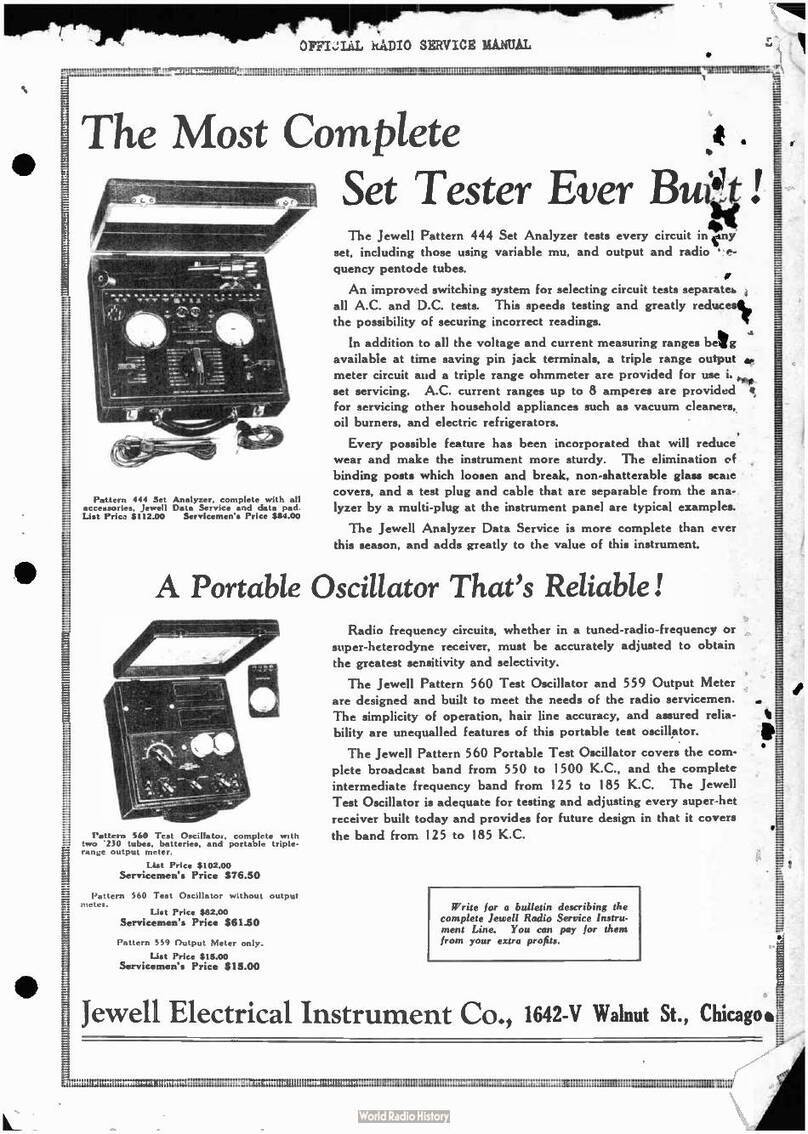5. Converting Voltage Readings to Tilt Angles and Temperatures
The tiltmeter voltage outputs are quickly converted to tilt angles as follows: Multiply the voltage
reading by the scale factor in Appendix A. For example, if the scale factor is 0.600 degree/Volt and the
voltage reading is +2.000 Volts, then the tilt angle is +1.200 degrees from sensor null.
Similarly, the voltage reading from the tiltmeter temperature sensor is converted to temperature
by multiplying it by a scale factor of 0.1C/mV (100C/Volt), with 0 mV = 0C.
6. Grounding and Transient Protection
Your tiltmeter has separate power ground and signal ground wires in the tiltmeter cable. Both are
connected (common) inside the tiltmeter. Signal Ground is the reference state for single-ended tilt
measurements and for temperature measurements. We recommend that you do not connect the Power
Ground and Signal Ground wires at your power supply or recorder. Current needed to power the
tiltmeter flows in the power ground wire and, as predicted by Ohm’s Law, the ground potential is
different at opposite ends of this wire because of wire resistance. By keeping signal ground separate from
power ground, your tilt and temperature readings will not be affected by this potential difference.
If you ground the power ground wire to earth, do so at one end only. Earthing in more than one
location can produce ground loops and create unstable readings.
Variable resistance type surge absorbers connect each wire in the tiltmeter cable to the metal en-
closure (case) that houses your tiltmeter. If operated in salt water, the tiltmeter case will be well
grounded. If operated on land, connecting the enclosure to a grounding rod, or other form of earth
ground, will reduce the likelihood of an electronic failure caused by high-voltage transients. Such
transients can be caused by nearby lightning strikes or unstable power sources. Grounding the cable
shield (PVC jacketed cables only) to earth at the power supply end can also help avoid transient-induced
damage and can reduce noise in your measurements. Note that the cable shield is terminated at the
tiltmeter end and is not connected to the metal tiltmeter enclosure.
High-voltage transients are the most common cause of failure of field instruments in outdoor in-
stallations. In a typical occurrence, a high-voltage spike from a lightning strike or power surge travels
along the cable until it encounters the instrument’s electronic circuitry, where the delicate low-voltage
components are overloaded and fail. The protections provided in your tiltmeter reduce the likelihood of
failure. Commercially available surge suppression circuitry can provide additional protection.
7. Maintenance and Troubleshooting
7.1 Routine Maintenance
The routine maintenance procedures given here will help ensure that your
DeepWater
tiltmeter
provides many years of trouble-free service.
Keep your tiltmeter clean and away from extremes of heat and cold. Dirt and extreme tempera-
tures shorten the life of the seals and unnecessarily stress the electronic components. Keep the tiltmeter
out of direct summer sun because solar radiation can create internal temperatures much higher than the
ambient temperature –in some cases higher than the rated storage temperature of the tiltmeter.
To ensure that your tiltmeter maintains its waterproof seal, make sure that the connector and the
screws securing the lid are tight before submergence. The O-ring in the lid is made of nitrile (Buna-N)
and can be replaced if damaged by Parker O-ring size 2-247. The O-ring should be lubricated with a light
coating of silicon grease such as Dow Corning 112 or Molykote 44 Medium.


































